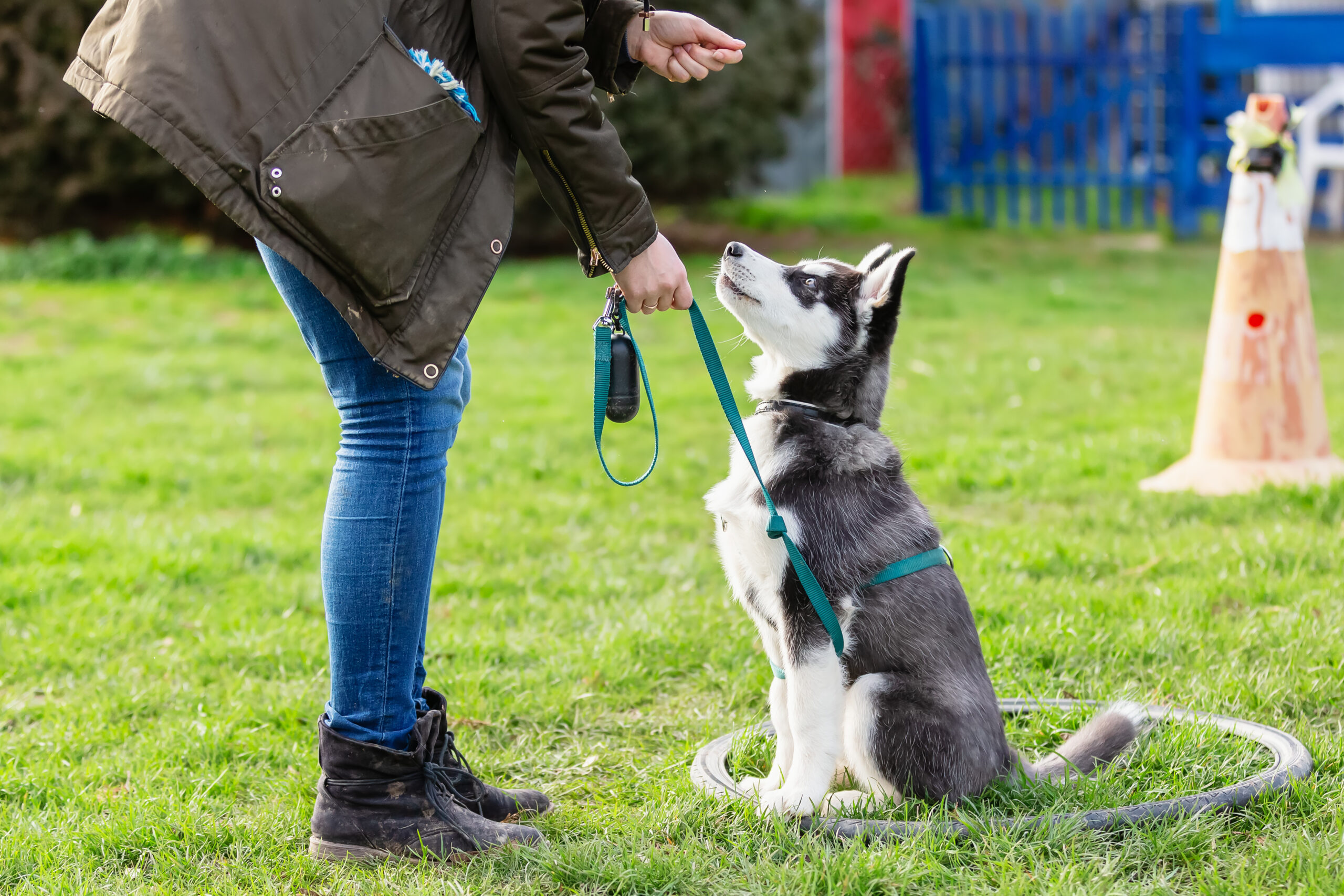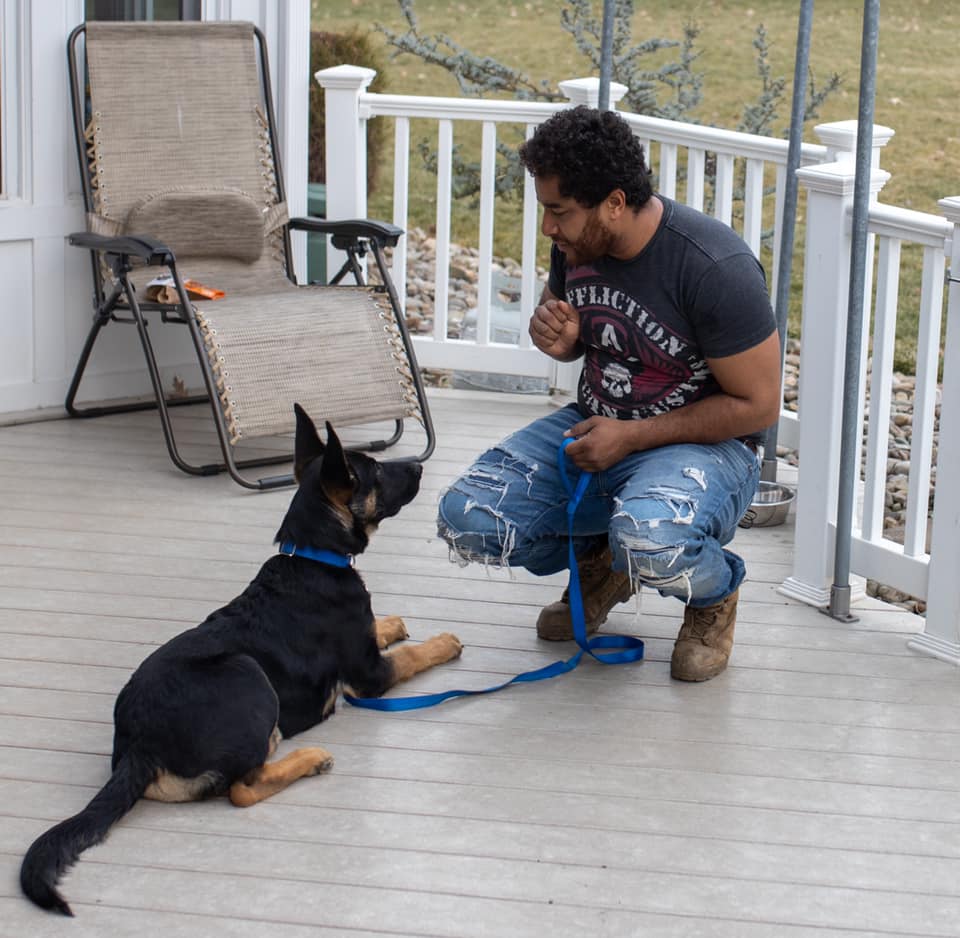Dog Training Near Me: Essential Equipment You’ll Need
The Ultimate Source for Recognizing Pet Dog Training Techniques and Finest Practices
Understanding dog training approaches and ideal methods is crucial for any kind of canine owner. Various strategies exist, each with one-of-a-kind benefits and obstacles. Favorable reinforcement has become a popular technique, yet lots of misconceptions linger. Discovering these techniques can light up effective approaches and reveal the subtleties of canine habits. As the journey unfolds, one might uncover very useful resources that enhance both training and the bond with their pet. What insights wait for those willing to discover better?
Comprehending the Fundamentals of Canine Training
Effective dog training pivots on a strong understanding of its essential principles. At its core, dog training entails instructing a dog to respond to commands and act suitably in various scenarios. This process needs uniformity, persistence, and positive reinforcement, which urges preferred behaviors while inhibiting undesirable ones.
Recognizing canine actions is essential, as it helps instructors acknowledge just how canines find out and connect. Variables such as socialization, setting, and individual character play substantial roles in shaping a pet's response to training. Moreover, developing a bond based on count on and respect boosts the training experience for both the fitness instructor and the pet.
Clear communication is crucial, as pets respond best to straightforward commands and hints. By laying a solid foundation rooted in these fundamental principles, trainers can successfully assist their pet dogs toward ending up being well-behaved friends. This understanding sets the stage for exploring more specialized training methods in subsequent discussions.
Popular Dog Training Methods Explained
In the domain of dog training, various approaches have actually gained appeal amongst fitness instructors and family pet owners. Positive reinforcement strategies concentrate on rewarding wanted actions, while remote control training supplies a particular means to mark those actions efficiently. Understanding these approaches can boost the training experience for both pets and their trainers.

Favorable Support Techniques
Positive reinforcement methods have actually become a foundation of modern-day dog training, highlighting the value of gratifying preferable actions to encourage their repeating. This approach concentrates on supplying positive stimuli, such as deals with, appreciation, or play, instantly after the canine performs the wanted activity. The underlying concept is that dogs are more probable to repeat behaviors that result in favorable end results. Instructors often utilize this method to educate commands, change habits, and develop depend on between the canine and handler. Uniformity is key; rewards must be certain and timely to reinforce the organization in between the reward and the actions. On the whole, favorable reinforcement promotes a satisfying and healthy learning setting for both pet dogs and their owners, fostering a solid bond.
Clicker Training Basics
Several pet dog trainers integrate remote control training as a preferred method to boost interaction with their pet dogs. This method uses a tiny tool that releases a distinctive clicking noise to mark wanted habits instantaneously. The click works as a signal to the canine that they have actually executed the correct action, adhered to by an incentive, normally a treat. Unlike various other training techniques, clicker training stresses timing and uniformity, which assists canines understand what is expected of them. Fitness instructors usually start with basic commands, gradually progressing to more complex tasks. This method fosters a positive discovering atmosphere, enhancing the bond in between pet dog and proprietor. Because of this, clicker training is recognized for its effectiveness and versatility across different pet types and training scenarios.
Favorable Support: The Most Effective Method
Favorable support stands apart as one of one of the most effective canine training techniques due to its countless advantages for both canines and fitness instructors. By rewarding preferred behaviors, proprietors can foster a positive knowing atmosphere that encourages their family pets to duplicate those activities. Typical techniques, such as treats, appreciation, and play, play a vital duty in efficiently applying this technique.
Benefits of Positive Reinforcement
While different training techniques exist, positive support has actually become among one of the most efficient methods for shaping wanted behaviors in dogs. This technique motivates family pets to duplicate favorable actions by awarding them with treats, appreciation, or playtime. One significant benefit is the facility of a solid bond in between the pet and the instructor, promoting trust and collaboration. In addition, positive support lessens concern and stress and anxiety, promoting an extra delightful discovering environment. It boosts the pet dog's general well-being, as they learn in a stress-free ambience. Canines trained with positive support have a tendency to exhibit better retention of discovered behaviors, leading to lasting obedience and boosted socializing. Inevitably, this approach supports an unified connection in between canines and their owners.
Common Techniques Explained
Checking out different training approaches discloses that positive support sticks out as the most reliable method for dog training. This technique concentrates on gratifying desired actions, making it much easier for dogs to associate actions with favorable results. Treats, appreciation, and play function as rewards, encouraging pets to repeat etiquette. Unlike revengeful approaches, positive reinforcement cultivates a relying on relationship between pet dog and proprietor, reducing concern and anxiousness. Additionally, this technique has actually been revealed to boost a dog's interest for learning. Common methods consist of remote control training, Our site where a distinctive audio notes the desired habits, and utilizing high-value incentives for tough tasks. In general, favorable support not only advertises reliable training yet additionally supports a happy and well-adjusted canine buddy.
Usual Misconceptions Regarding Canine Training Exposed
Numerous canine owners drop target to typical myths about training, frequently resulting in confusion and aggravation. One prevalent misconception is that a pet's actions is exclusively figured out by type, suggesting that specific breeds are naturally tough to train. In truth, individual character and training techniques play a more substantial role. Another misunderstanding is that punishment is necessary for efficient training. Favorable reinforcement has verified to be more reliable in fostering wanted behaviors. In addition, some believe that older pet dogs can not learn new methods, however pets of any type of age can adjust and learn with the best strategy. Finally, the concept that training need to be quick and very easy often causes impractical expectations. Successful training needs consistency, persistence, and time. By disproving these misconceptions, dog owners can embrace a lot more reliable training techniques, causing much healthier partnerships with their pets and boosted behavior generally.
Tips for Effective Pet Dog Educating Procedure
Effective pet training sessions are built on a foundation of clear communication and positive reinforcement, making sure that both the instructor and the pet understand the expectations. To optimize effectiveness, trainers need to maintain a calmness and client temperament, as pets usually mirror human feelings. Uniformity is crucial; hints and commands need to be used consistently to prevent confusion.
Short, concentrated training sessions, commonly lasting 5 to 15 mins, can improve retention and interaction. Incorporating a variety of workouts maintains the sessions stimulating and prevents dullness. Making use of high-value treats or toys can encourage the pet dog and strengthen preferred behaviors.
Timing is essential; rewards need to be offered quickly after the preferred behavior to develop a clear connection. Finally, finishing each session on a positive note, with appreciation or play, promotes a sense of achievement and enthusiasm for future training. These methods collectively add to pleasurable and effective training site experiences.
Developing a Stronger Bond With Your Pet With Educating
A strong bond in between a canine and its proprietor can significantly boost the training experience. This connection cultivates count on, making the pet much more responsive to learning. Involving in consistent training sessions enables proprietors to connect efficiently with their pets, strengthening favorable habits while constructing shared regard.
Favorable reinforcement strategies, such as treats and praise, reinforce this bond, urging canines to connect training with delightful experiences. Additionally, including play into training can make learning enjoyable, improving the emotional connection.
Recognizing a canine's body language is additionally important; it supplies understandings right into the dog's convenience and readiness to engage. When owners respond suitably to their dog's signals, they cultivate a feeling of safety and understanding.
Eventually, spending time in training not just boosts obedience but likewise grows the emotional ties in between dogs and their owners, leading to a harmonious and satisfying partnership.
Resources for Continued Knowing and Support
To boost their pet dog training trip, owners can access a range of sources that provide continuous discovering and assistance. Dog Training Near Me. On-line platforms such as forums, programs, and webinars enable pet dog proprietors to get in touch with knowledgeable fitness instructors and fellow canine lovers. Web sites like the Organization of Expert Pet Trainers (APDT) supply valuable short articles and suggestions on diverse training techniques
Books authored by respectable instructors offer as superb overviews for recognizing numerous techniques and philosophies. Regional neighborhood facilities and animal shops frequently organize training courses, supplying hands-on experience and socialization chances for both pets and their owners. Furthermore, social networks teams can use real-time guidance and inspiration, creating a supportive network.
Podcasts concentrated on pet dog training topics can also be a convenient way for proprietors to take in new details while on the go. Together, these resources promote continuous understanding, making sure that dog proprietors remain equipped to nurture their canine friends successfully.

Regularly Asked Concerns
The length of time Does It Require To Train a Pet Dog Effectively?
The moment called for to educate a dog efficiently varies significantly, depending upon aspects such as the dog's age, type, character, and the uniformity of the training techniques used. Usually, it can take numerous weeks to months.
Can I Train My Pet Myself or Should I Work with a Professional?
Establishing whether to train a canine separately or employ an expert relies on the owner's experience, the dog's temperament, and particular training demands. Dog Training Near Me. Both strategies can be effective, yet support might improve the process significantly
What Age Is Finest for Starting Pet Training?
The most effective age for starting pet dog training commonly falls in between 8 to 16 weeks. At this stage, young puppies are most receptive to discovering, making it an ideal time to develop fundamental skills and socializing.
How Do I Deal With Unwanted Habits in My Pet dog?
To fix unwanted behaviors in a pet dog, uniformity is essential. Strategies such as positive reinforcement, rerouting focus, and establishing clear commands assist lead the canine towards better activities, cultivating better habits with time.
Are There Particular Types That Are Easier to Train?
Particular types, such as Border Collies, Poodles, and why not find out more Labrador Retrievers, are typically considered much easier to educate as a result of their intelligence and determination to please. Nevertheless, specific personality and owner consistency also considerably affect training success.
Understanding dog training techniques and finest methods is crucial for any type of pet dog owner. Positive reinforcement stands out as one of the most effective canine training strategies due to its countless benefits for both canines and fitness instructors. Effective pet dog training sessions are constructed on a structure of clear interaction and favorable reinforcement, making sure that both the canine and the trainer understand the assumptions. The time called for to train a canine efficiently varies especially, depending on variables such as the pet dog's age, breed, temperament, and the uniformity of the training techniques used. Determining whether to educate a pet dog separately or hire a specialist depends on the proprietor's experience, the canine's temperament, and details training requirements.